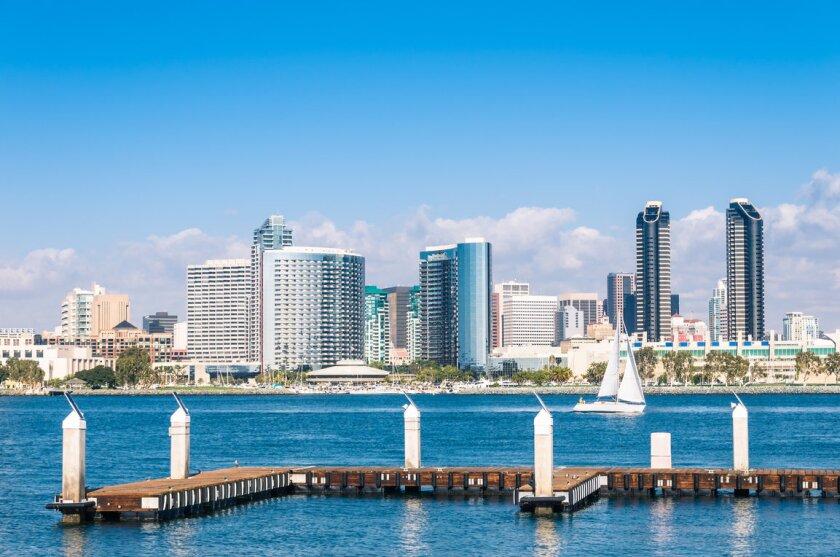
500,000 or More Population Category
1st: City of San Diego — After coming in second place last year, San Diego takes the top spot among large cities in 2019. The southernmost big city in California is in the midst of several sweeping innovations that promise to save money, benefit residents and generally advance the cause of data-driven government. Among these are some truly massive collaboration projects — the city is in the midst of setting up a Joint Powers Authority with the county, nearby cities, 18 native tribes, federal agencies and two branches of the military to support SanGIS. This will serve as a data portal for delivering GIS services and procuring aerial imagery as well as lidar data. Then there’s the Security Alliance Information Lab, which also pulls in federal, local and private-sector partners to improve cyberincident response — on top of advances San Diego has made on endpoint protection, email filtering and defense against password-based attacks. A new enterprise asset management system has helped staff achieve their goal of paving 1,000 miles of roadway more than a year early, while the ongoing project to set up a blanket of sensors during streetlight replacement has reached nearly 3,000 out of an eventual 4,000 nodes. These will deliver data on vehicle and pedestrian counts, parking availability and the weather. Behind all this is a system that truly engages the public. The city regularly surveys residents to ensure that their desires are reflected in strategic goals, and it offers interactive tools on the budget, community development, performance metrics, the placement of smart city sensors and more so that it can gather feedback. In coming months, look for San Diego to continue deploying 5G with Verizon as its IT department offers tools to hasten small cell permitting.
2nd: City of San Jose — Partnerships, performance and pilots were among the strategies that catapulted the so-called “capital of Silicon Valley” and the state’s third most populous city from a sixth-place tie last year to second place. San Jose has set itself the goal of becoming North America’s most innovative city by 2020. It also lays claim to being America’s leanest big city, with 6,800 employees serving just over 1 million people.
One way this happens is through public-private partnerships. San Jose has contracted with AT&T, Verizon and Mobilitie to expand small cell sites and broadband reach — monetizing the carriers’ high-volume deployments by committing them to fund digital equity. In February, the city announced the San Jose Digital Inclusion Fund, which will marshal an estimated $24.1 million in revenue over 10 years from small-cell and fiber contracts to bridge its digital divide.
Other partnerships include extending FirstNet to all city first responders; deploying free Wi-Fi in 14 more city parks; working with Santa Clara County and the city/county of San Francisco on cybersecurity; and, through Terragraph, a partnership with Facebook Connectivity Lab, replacing the city’s legacy community Wi-Fi network during this year and next.
The city began adopting Objectives and Key Results (OKRs) in 2017 and 2018 to track projects and transformations; and will do so more broadly in 2019 and 2020. The OKRs are connected to the City Manager’s Enterprise Priorities for enhanced monitoring of progress and needs.
Among other engagements, the German auto firms Daimler and Bosch have committed to piloting an automated ride-hailing service in the city this year. San Jose won an American Planning Association Smart City Merit Award in April for working with startup UrbanLogiq to improve traffic flow with data-driven decision-making. The city also offered the use of cybersecurity resources to other municipalities, through an ongoing RFP, and four of its Bay Area neighbors have accepted.
4th: City of Los Angeles — Los Angeles made another strong showing in this year’s survey, continuing its leading work in digital inclusion, mobility and cybersecurity. The nation’s second most populous city cites tackling homelessness as its top priority for the coming year, an initiative in which the Information Technology Agency (ITA) is playing a critical role. As part of $1.2 billion from a ballot measure toward homelessness and housing, ITA aids in citywide communication on the issue, including a predictive analytics tool that identifies those Angelenos most at risk before they become homeless so the city can provide preventive services. ITA also heads digital inclusion efforts for those who are struggling financially or are in need of training in new digital schools, and assists with real-time homeless services like coordination of response at the street level.
The Southern California metropolis is prioritizing creating equity across the city workforce in terms of both gender and race and working to develop a portal that makes it easier to report incidents of harassment and discrimination. This is in keeping with the city’s report that their No. 1 priority in the next year is hiring and retaining IT personnel. ITA reports that 52 percent of their workforce will be eligible for retirement over the next two years, and to help compensate for that loss is continuing its paid college internship program and is working on a mobile worker program. To further negotiate the digital divide, ITA and the Mayor’s Office have collaborated on the Find Your Future program, which uses gamification and other tech to pair disconnected youth with local jobs that put them on the path toward careers.
L.A. also has a strong mobility-first initiative, and in the near future plans to develop data security, privacy and sharing guidelines. The L.A. Cyber Center now provides services to more than 600 organizations, and a new citywide social media policy brings together teams from across 42 departments in a unified citizen-facing front at @LACity on Twitter.
*The Center for Digital Government is part of e.Republic, parent company of Techwire. This story first appeared in Government Technology magazine, Techwire’s sister publication.




